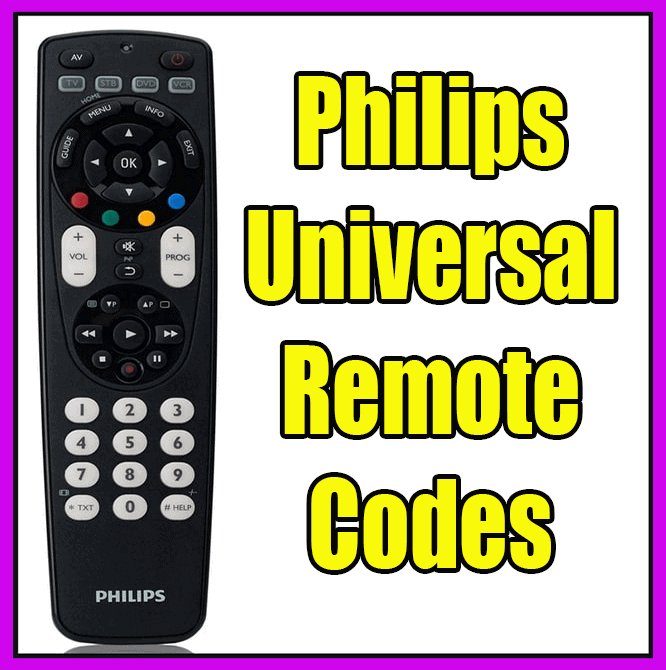
Honestly, I’ve been there myself, staring at the remote in one hand and squinting at a blinking TV in the other, muttering, “Why won’t this thing work?!” So, if you’re in the same boat, or just want to get ahead of the curve before tackling your Philips universal remote, I’ve rounded up the most common programming mistakes that trip people up. Let’s walk through them, one by one, so you don’t end up stuck in remote-control purgatory.
Not Using the Correct Code for Your Device
Here’s the thing: each device (TV, DVD, sound system) has its own “secret handshake” with the remote, in the form of a code. And this isn’t some universal, one-size-fits-all number like a lucky lottery ticket. Philips universal remotes rely on specific codes for specific brands and sometimes even for specific models. If you use the wrong code, your remote and your device end up speaking two totally different languages, and nothing works.
I once spent half an hour entering codes for my Samsung TV, growing increasingly irritated, only to realize I’d been using the codes for Sony by mistake. Rookie error. Always double-check the manual or the Philips website and get the exact code list for your *exact* device brand and model. If you’re missing the paper manual (because who honestly knows where those go?), the Philips support site has you covered.
Pro tip: If your code isn’t working, try all the codes listed for your brand. Sometimes one will click, even if it’s not the first one suggested.
Missing the Timing Window During Programming
Now, timing! Philips universal remotes usually want you to enter the code within a certain time after pressing the “Setup” or “Code Search” button. If you dawdle, get interrupted, or just take too long scrolling through your phone for the right code, the remote can time out. That means you have to start the process from scratch.
Imagine you’re trying to jump into a double-dutch rope; you’ve got a small window, and if you hesitate, you miss it. Same deal here. As soon as you hit the code entry mode, have your device code ready to enter, and follow the steps quickly but carefully.
- Have your device code handy before you start. No last-minute Google searches mid-programming.
- Watch the remote’s indicator light: It usually blinks or goes steady to show it’s ready. If the light goes out, you’re out of luck — reset and try again.
Taking too long is one of the sneakiest mistakes because everything else might be right, but it simply won’t work if you’re a few seconds too slow.
Not Fully Resetting After a Failed Attempt
Okay, so maybe you’ve tried a few codes, and your remote still isn’t syncing. It’s tempting just to keep going, but sometimes the remote stores old, half-finished attempts, confusing the next round of programming.
If your Philips universal remote starts acting unpredictable (say, only some buttons work, or it controls the wrong device), it’s probably time for a full reset. Think of it like rebooting your phone when it’s being weird. Most Philips models have a reset process — often holding down specific buttons or pulling the batteries for about a minute.
Why bother? Because a remote with leftover bad programming attempts is like a computer with too many browser tabs open: slow, confused, and not behaving as it should. A quick reset gives you a clean slate.
Confusing Device Buttons or Modes
On the Philips universal remote, you’ll notice there are mode buttons labeled “TV,” “DVD,” “AUX,” and sometimes “CBL” for cable boxes. These aren’t just decorations; they tell the remote what device you want it to control at any moment. If you accidentally program the wrong mode (like entering your TV code while the remote is set to “DVD”), you’ll find yourself in a world of confusion. The remote might even control your soundbar when you’re trying to mute the TV — total chaos.
I’ve mixed these up myself when tired — it’s an easy mistake, especially when you’re programming everything in one go for a slick home theater setup. Always double-check that you’re pressing the correct mode button *before* each programming session.
- Press the “TV” button before entering a TV code.
- Use the “AUX” or “DVD” mode for the relevant devices.
- If you lose track, reset and start over with the right mode selected.
Skipping the SYNC or Pairing Step
Programming isn’t always just about entering a code. Many newer Philips universal remotes also ask you to “pair” or “sync” with your device afterward. Skipping this step is like writing a heartfelt letter and forgetting to put it in the mailbox. The remote won’t actually control the device unless the sync step is completed.
Sometimes, this means pointing the remote at the device and pressing the “Power” or “Enter” button to test. If the device doesn’t respond, you may need to repeat the step, or try a different code and sync again. It’s a little tedious, but it’s an important part of the process.
If you’re in a rush or just assume it’ll work, it’s easy to overlook syncing, leaving you with a remote that technically “has the code” but still won’t talk to your TV. Always follow through with the pairing step and verify the buttons actually do what you expect.
Battery Problems Go Overlooked
Here’s an underrated classic: weak or dying batteries. Universal remotes, including those made by Philips, can behave really strangely when the batteries are on their last legs. Maybe some buttons work, others don’t, or the remote blinks its indicator light but doesn’t actually send signals.
I once spent a good twenty minutes reprogramming my remote, growing more and more frustrated, until I realized the batteries were practically dead. Swapped them out, and suddenly everything worked like a charm. If you run into weirdness — especially after programming — always check the batteries before blaming your syncing or coding skills.
- Try fresh batteries before every programming attempt.
- If things get finicky halfway through, swap in new ones and start over.
Remember: Low battery issues can masquerade as programming errors. Save yourself the headache!
Misunderstanding the Differences: Universal vs Original Remotes
You might be wondering, “Why not just stick with the remote that came with my TV?” Well, universal remotes — like those from Philips — offer *way* more flexibility: one remote to rule them all. But they do come with more room for error because you’re asking one remote to pretend it’s several different ones.
Original remotes are usually plug-and-play: power on, and you’re good. Universal remotes require setup and a little patience, but they’re a lifesaver if you’ve lost an original or your coffee table is crowded with too many remotes.
Comparing the two, programming mistakes are far more common with universal models simply because they have to be taught to mimic different brands and functions. Just keep in mind that if you hit a wall, the odds are it’s a programming or code issue — not that your TV or remote is broken.
| Universal Remote | Original Remote |
| Needs code or pairing for each device | Works out of the box for one device |
| Controls multiple devices, replaces lost remotes | Limited to one device |
| More potential for setup mistakes | Minimal setup needed |
Troubleshooting Mistakes and What To Do Next
Let’s say you’ve tried everything, and your Philips universal remote still isn’t playing nice. Don’t panic! The troubleshooting process starts with checking everything we’ve talked about:
- Double-check the code and mode.
- Confirm the batteries are fresh.
- Reset the remote and retry the steps, paying close attention to timing.
- If the remote is still stubborn, consult the Philips support site — sometimes there are firmware updates or new code lists for newer devices.
Here’s a little story for perspective: my neighbor once called me in a panic because her remote wouldn’t control her new soundbar after hours of trying. Turns out, she’d been skipping the device mode button entirely, programming everything under “TV.” We fixed it in about five minutes once we walked through the basics together. Most programming mistakes are that simple — you just need to go slow, double-check each step, and remember that even tech-savvy people mess up sometimes.
Wrapping Up On Philips Universal Remote Programming
So, there you have it: from timing blunders to mode mix-ups, programming a Philips universal remote isn’t rocket science, but it does trip up a lot of us — sometimes more than we’d care to admit. The most common mistakes are usually small details, things you might skip if you’re setting it up while distracted or in a rush. If you treat it like making a recipe (ingredients ready, steps in order, and a little patience), your chances of success go way up.
The great thing about universal remotes is they truly can simplify your home setup once programmed correctly. And hey, if you run into any hiccups, now you know exactly where to look first. Just take it slow, watch out for those sneaky mistakes, and you’ll be toggling all your devices like a pro in no time.
